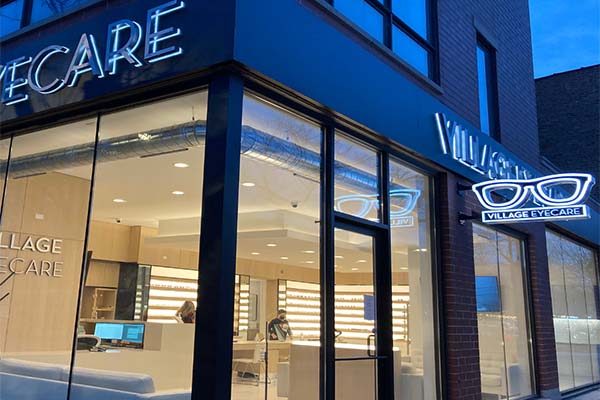Understanding the Various Vision Modification Procedures Available for Clearer View
In the realm of vision correction procedures, a wide variety of alternatives exist to deal with refractive errors and give individuals with clearer view. From the widely acknowledged LASIK surgical treatment to less intrusive procedures like PRK and implantable lenses, the area of ophthalmology provides a variety of methods customized to suit various requirements and choices. Each procedure features its own collection of factors to consider, benefits, and prospective risks. Recognizing the nuances of these vision correction techniques is essential for making educated decisions about one's aesthetic health. Let's explore the details of these procedures and clarified the course to accomplishing boosted vision clearness.
LASIK Surgical Treatment
LASIK surgical treatment is a typical refractive procedure utilized to correct vision problems such as farsightedness, nearsightedness, and astigmatism. This surgical method, which stands for Laser-Assisted in Situ Keratomileusis, intends to improve the cornea to boost exactly how light is focused on the retina, eventually enhancing vision clearness.
One of the primary advantages of LASIK surgical procedure is the quick renovation in vision experienced by individuals. Lots of individuals notice a significant improvement in their vision quickly after the treatment. Additionally, most people report very little pain and pain throughout the surgical treatment and recovery duration. The healing time for LASIK is relatively fast, with lots of individuals returning to their day-to-day tasks within a day or more post-operation. In general, LASIK surgical treatment is a prominent option for people looking for a long-lasting option for their vision troubles.
PRK Treatment

PRK is an appropriate alternative for individuals with thin corneas or those at a greater risk of eye injuries, as it does not include creating a corneal flap. The healing procedure for PRK is slightly longer compared to LASIK, as the epithelium requires time to regenerate. People may experience pain and fuzzy vision for a couple of days following the treatment.
In spite of the longer recovery time, PRK can generate outstanding cause vision improvement, making it an important choice for those who may not be ideal candidates for LASIK surgical treatment. - Andalusia Pediatrics
Implantable Lenses
Unlike PRK where the cornea is improved directly, implantable lenses provide one more method for fixing vision by inserting synthetic lenses inside the eye. This procedure is particularly useful for individuals with high degrees of astigmatism, index farsightedness, or nearsightedness that might not appropriate prospects for laser surgical procedures like LASIK or PRK.
Implantable lenses, additionally recognized as phakic intraocular lenses, work by supplementing the eye's natural lens with an artificial one. These lenses can be positioned before the natural lens (anterior chamber) or behind the iris and before the natural lens (posterior chamber) By adjusting the power and positioning of these lenses, eye doctors can successfully remedy refractive errors and enhance aesthetic skill.
One benefit of implantable lenses is that they are exchangeable and detachable, giving adaptability for future adjustments. However, just like any type of surgery, there are threats entailed, such as infection or cataract development. People thinking about implantable lenses must seek advice from an eye treatment expert to identify one of the most appropriate option based upon their private needs and eye wellness.
Corneal Rings

The procedure for inserting corneal rings is minimally invasive and reasonably quick, usually performed as an outpatient procedure. During the surgery, the ophthalmologist makes a small incision in the cornea and inserts the rings at a particular depth. Once in place, the rings help to reshape the cornea, providing a smoother surface area for light to get in the eye, which can cause more clear vision.
Corneal rings are considered a get more reversible treatment, as they can be gotten rid of or changed if needed. While they might not entirely remove the need for glasses or contact lenses, corneal rings can substantially enhance vision high quality and general aesthetic comfort for people with keratoconus or various other corneal abnormalities.
Refractive Lens Exchange
Adhering to the correction of corneal irregularities with procedures like corneal rings, another vision correction method that can resolve refractive errors is Refractive Lens Exchange (RLE) RLE is a surgery that includes replacing the eye's natural lens with a synthetic intraocular lens (IOL) to fix refractive errors such as presbyopia, farsightedness, and nearsightedness. This treatment is particularly beneficial for people that may not be ideal candidates for treatments like LASIK or PRK because of variables such as thin corneas or high refractive mistakes.
RLE belongs to cataract surgery, as both entail removing the eye's all-natural lens; however, in RLE, the lens is clear, not gloomy as in cataracts. The artificial lens dental implanted during RLE can be personalized to resolve the individual's details refractive error, supplying clear vision at various ranges. Recovery time for RLE is fairly fast, and clients can anticipate enhanced vision not long after the treatment. Just like any operation, prospective risks and difficulties exist, so a comprehensive assessment with an eye treatment professional is vital to figure out if RLE is the right vision improvement option.
Conclusion

In the world of vision adjustment treatments, a wide variety of options exist to resolve refractive errors and offer people with clearer sight.LASIK surgical treatment is a common refractive treatment utilized to correct vision issues such as astigmatism, nearsightedness, and farsightedness.While Look At This also an usual refractive procedure, the PRK (Photorefractive Keratectomy) strategy differs from LASIK surgical treatment in its method to correcting vision troubles.Following the improvement of corneal irregularities with procedures like corneal rings, another vision modification technique that can attend to refractive mistakes is Refractive Lens Exchange (RLE) LASIK surgical treatment, PRK treatment, implantable lenses, corneal rings, and refractive lens exchange are all choices that can address different vision problems.